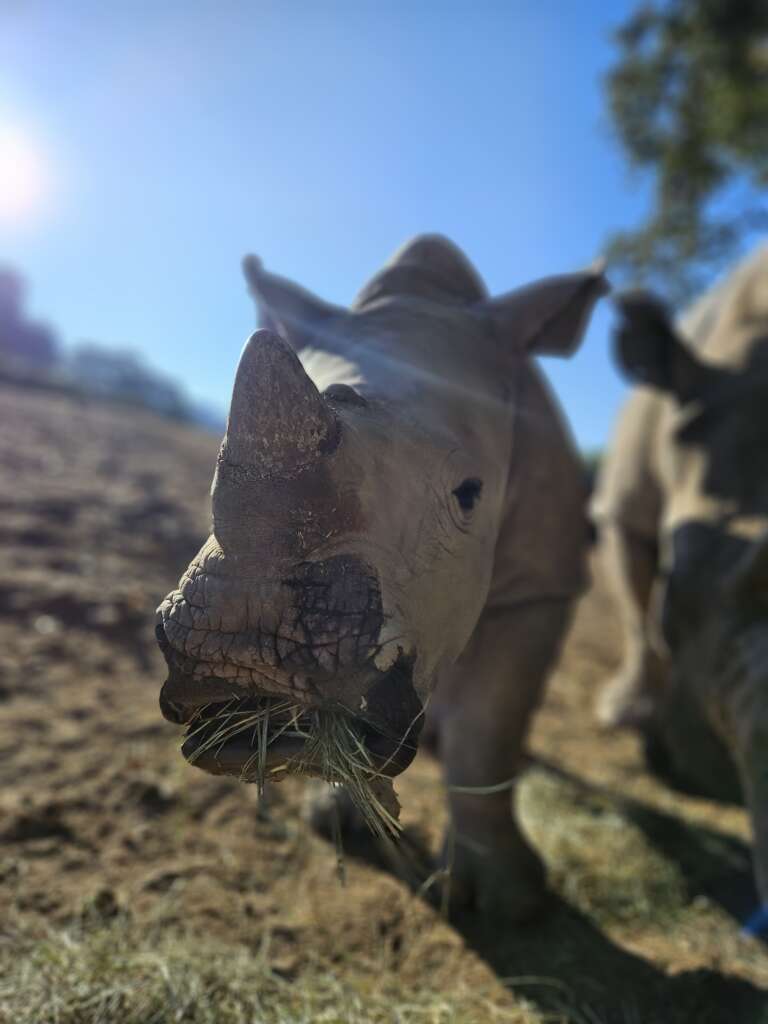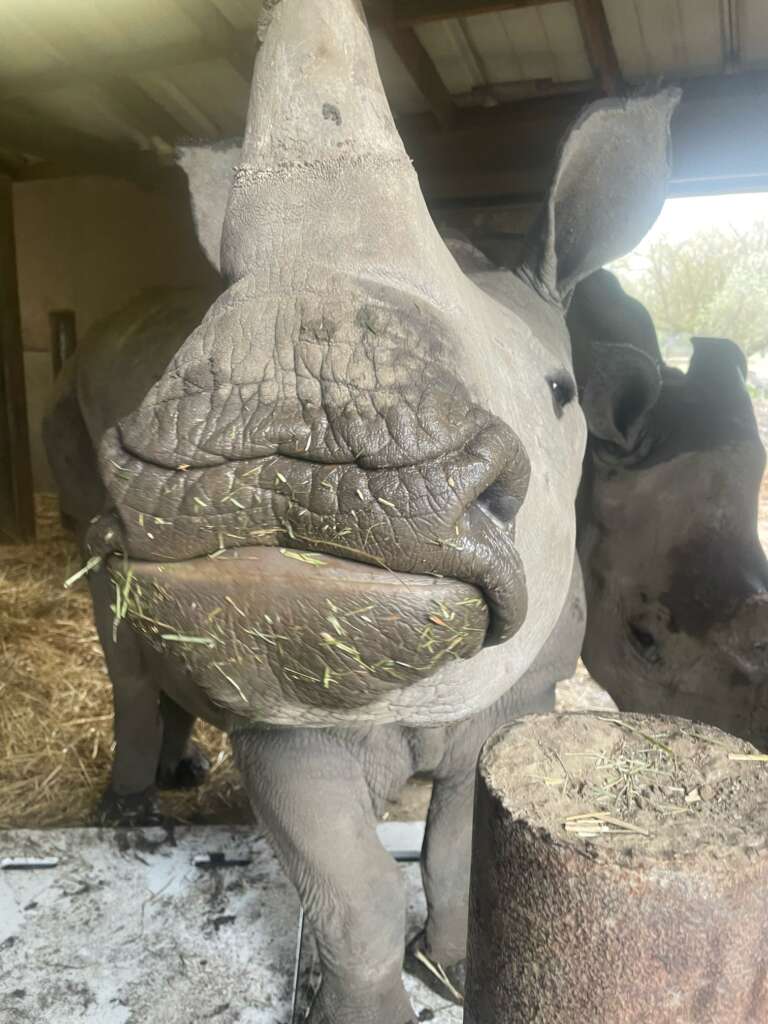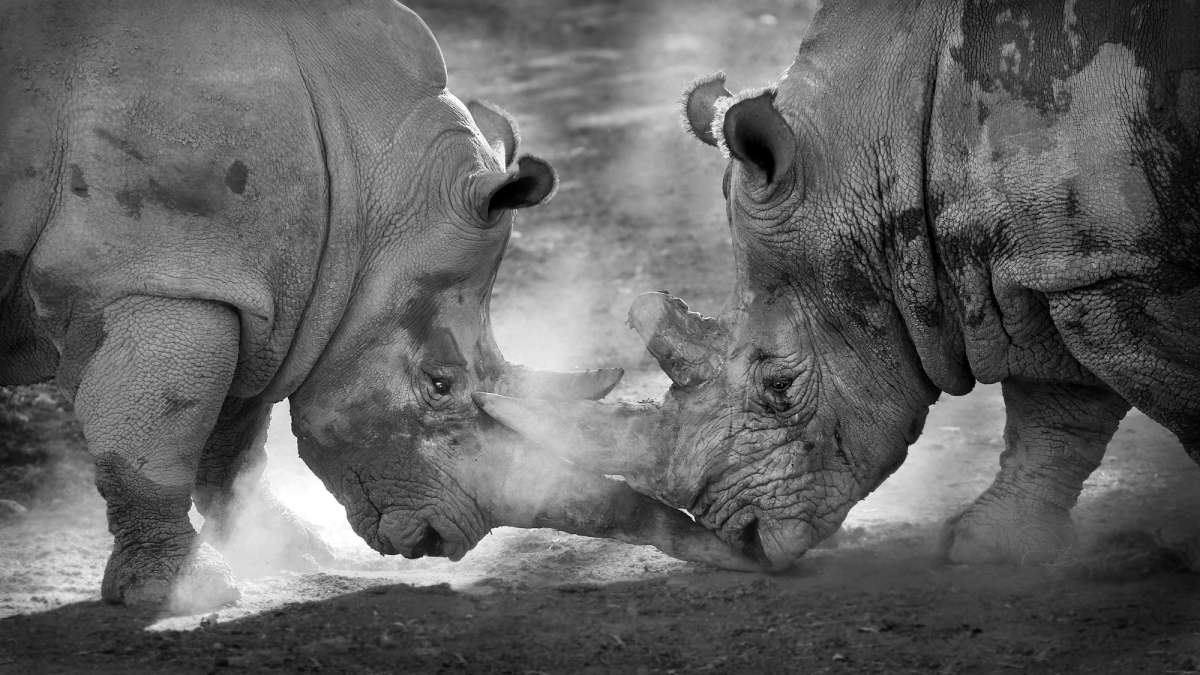Lessons from Rhino Conservation
Posted in: Conservation, Goings on
As we celebrate the first year of Otto’s life, I can’t help but think about young rhinos across the world. It’s no secret that rhinos are struggling in the wild—rhino conservation is one of the most publicized fights to save wildlife in the world. And with all of this publicity, I’ve really struggled with what to write about in this article. Want to know the intricate details of how the International Rhino Foundation (IRF) is working to protect rhino populations worldwide? Rhinos.org has you more than covered. Want to know the most up to date numbers on wild rhino populations? Check out the IUCN Red List pages on each rhino species, or the IRF’s 2023 State of the Rhino report. What could I possibly add to the discourse? How can I write about a painful subject in a way that is honest enough that people don’t just think everything is fine, but hopeful enough that people don’t leave feeling depressed and unwilling to interact with this topic in the future? After a bit of consternation, I ended up looking back at all of the conversations I’ve had with guests and staff at Safari West about rhino conservation over the last 12 years. In all of these conversations, what have I learned? What do I wish people knew the most? In short, I can just use rhinos themselves as an analogy—because of a mistranslation, the two African rhino species are black rhinos and white rhinos, but the actual color of both species is gray. Similarly, on the surface rhino conservation can seem black and white—good guys and bad guys, good decisions and bad decisions, but in reality the world is shades of gray.
Almost every conversation I start about rhino conservation includes somebody making a sweeping statement damning all poachers, wondering how anybody could do such a horrible thing. It’s a fair first assessment—killing a rhino for its horn seems like a senseless act of violence. But we live in a place of extreme privilege. There are people living in poverty where wild rhinos roam, who have exhausted other options to provide for themselves and their families and turn to poaching a part of an animal that is worth more than its weight in gold. There are certainly poachers who are part of multinational crime organizations coming into Africa in helicopters with high caliber rifles that are less deserving of our empathy. But once conservationists understood that a lot of poaching was a result of desperation, they started hiring former poachers who used their tracking knowledge to become extremely effective anti-poaching rangers. Recognizing the shades of gray allowed for both people and rhinos to be helped more effectively.

Otto the Rhino by Erika Defer

Otto's 1st Birthday by Kellen Barton
Switching to a completely different area of rhino conservation, let’s look briefly at white rhinos as a species, the rhinos that live here at Safari West. There are two subspecies of white rhino: Southern white rhinos and Northern white rhinos. Almost every single living white rhino is a Southern white rhino. There are only two remaining Northern white rhinos, both females, living in a conservancy in Kenya. With only two females left, this is a functionally extinct subspecies….or is it? Over the last five years, egg cells have been harvested from these females and artificially inseminated with the frozen sperm from male Northern white rhinos. As of February 2024, 30 viable Northern white rhino embryos have been created, with plans to implant them into surrogate Southern white rhino mothers. On the surface, this feels like a no-brainer to support—using modern technology to miraculously bring back a subspecies from the brink of extinction? Sounds incredible. And it is—but like impoverished poachers, conservationists have to make impossible decisions prioritizing different forms of life. Many conservationists make the argument that their role is to protect biodiversity, protecting as many different species as possible. One of the best ways to do this is to buy and protect land. How much land could be bought, how many hundreds of species and tens of thousands of individuals could be protected with the hundreds of millions of dollars being spent attempting to resuscitate this dying subspecies of rhino? Once again, there are no easy, black and white answers. Who am I to decide which forms of life we should prioritize protecting and saving? People love rhinos—they are enormous, humbling, beautiful, charismatic animals. An engaging story matters in bringing people into the world of conservation, and the story of the rhino is certainly more gripping than stories about buying land.
So, what have I learned? I’ve learned that rhino conservation is a tangled web that can’t be untangled in a single conversation, or solved in a single article. I’ve learned it is an amazing privilege to be able to sit and state that all life is equally sacred and valuable, and never be put in the position of having to decide which species gets funding and which does not, of having to decide whether an endangered rhino or my family should live. I’ve learned that because most modern species extinctions are caused by interactions between humans and other animals, most modern wildlife conservation is holistic—both working to understand the needs of wildlife, as well as working to understand the needs of the people that wildlife is coming into conflict with. I’ve learned that helping people helps the wildlife around them. When people are food secure and have access to clean water, shelter, health care, and other basic physiological needs, they have the space to expand their sphere of empathy and will happily work to protect wildlife. This leads me to my most important lesson—I’ve learned that the world is too big for any one of us to surround ourselves with our spheres of empathy. Rhino conservation alone could easily take up a person’s entire empathetic bandwidth, and it occupies only the tiniest fraction of pain and suffering happening on this planet. Trying to expand our sphere of empathy too much, or too quickly, results in burnout and a rapid shrinking of that sphere. We have to accept that we all need to be selectively empathetic—we need to choose our battles, and we need to be kind to ourselves. I’ve learned that if there’s one thing that accomplishes nothing, it’s beating ourselves up for not being able to help everything, everywhere, all at once. If you are able to help rhinos today by donating to the IRF at rhinos.org, that’s incredible. If not, that’s ok too. Take care of yourself and the people around you. Wildlife conservation will be here when you’re ready.

Photo by John Burgess

